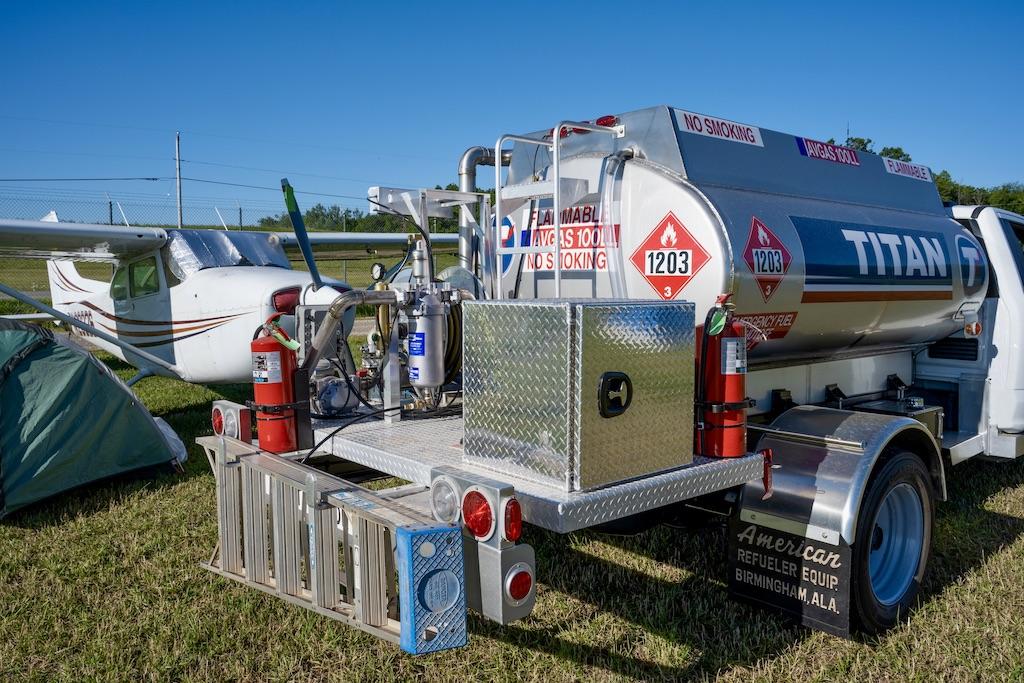
An avgas refueler delivers 100 Low Lead.
It all boils down to liability exposure.
As an analogy, let us pretend that the Environmental Protection Agency (EPA) issues an endangerment finding for carbon emissions due to burning ASTM D1655 Jet A/A-1. And let us pretend that California and Washington issue a ban on using Jet A/A-1 as soon as a “commercially viable,” carbon-free substitute turbine fuel becomes available.
Then let us assume a small company comes up with a substitute jet fuel that emits zero carbon emissions. We will call the small company’s substitute carbon-free fuel “Jet Free.” The small company pursues and obtains an FAA supplemental type certificate (STC), covering all makes and models of turbine-powered aircraft.
Notably, FAA testing only covers the minimum engine cycles and hours required by the applicable regulations and Advisory Circulars to meet STC requirements. The FAA never before has issued an STC for a non-ASTM fuel, including mogas. FAA is not a consumer protection agency and it is immune from liability, assuming it followed the STC approval process. But FAA now has issued a blanket STC for “Jet Free” to be used in all makes and models of turbine aircraft, including jetliners.
After earning the STC, the small company then refuses to undergo the rigors of ASTM certification for “Jet Free,” claiming that competitors would pirate the small company’s proprietary formula as soon as all the ingredients in the mix are made public. Not all the ingredients are listed in the small company’s current U.S. patent filing.
The small company has supplied very limited quantities of “Jet Free” to select engine and airframe manufacturers with the condition that they do not disclose the formula to anybody else. Those firms have conducted very limited preliminary performance and reliability tests.
The small company, nonetheless, expects the aviation industry to switch from ASTM D1655 Jet A/A-1 to “Jet Free” based on its having earned an FAA STC, coupled with EPA’s endangerment finding for D1655 Jet A/A-1 and mandates from certain states to switch to carbon-free jet fuel as soon as it becomes “commercially viable.”
None of the major business aircraft manufacturers—let alone major jetliner makers—none of the major turbine engine manufacturers, none of the major fuel distributors and handlers know everything that goes into “Jet Free,” let alone have they had the opportunity to use “Jet Free” to power their aircraft long term and their engines for full time between overhaul cycles.
Thus, some of the most critical, deep-pocket stakeholders put themselves at potential liability risk, if anything untoward occurs as a result of using a new fuel they did not test themselves long term. Side note: EPA does not know what all the ingredients are in “Jet Free,” so there may be environmental concerns.
So is it reasonable to assume that leaders of Airbus, Boeing, Bombardier and Embraer would feel comfortable switching over to a non-ASTM-approved, alternative, carbon-free jet fuel based upon an FAA STC alone? And what about GE, Pratt & Whitney and Rolls-Royce? What about turbine fuel producers Shell, Chevron and ExxonMobil? I would love to run this by Ed Bastian at Delta, Scott Kirby at United and Bob Isom at American to see if they would find this risk acceptable, just to declare their jetliner operations are carbon free.
Therefore, I surely would not put my wife or family members on any jetliner with a non-ASTM fuel in the tanks. I would want assurance from all stakeholders in the food chain that the fuel is safe and not detrimental to aircraft or engine reliability.
So why then would any of us put ourselves, spouses and loved ones on piston-powered aircraft fueled with non-ASTM unleaded avgas that has not been vetted by all stakeholders in the food chain? The risks are just far, far too great.





